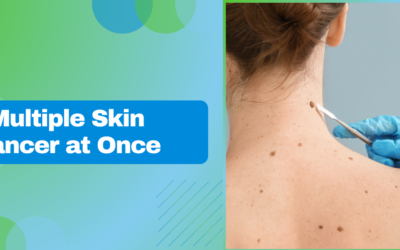Diabetic Ulcer Treatment in Mumbai

Who can get a diabetic foot ulcer?
People who have diabetes are more likely to develop foot ulcers, especially those on insulin. Also, people who have uncontrolled diabetes, long-term diabetes, increased cholesterol levels, and heart-related conditions on account of diabetes are more likely to have a foot ulcer. Other high-risk factors include being overweight, consumption of alcohol and tobacco.
A diabetic ulcer is preventable provided patients do two simple things daily:
- Check their feet daily for open injuries/ wounds
- Keep their sugars under good control.
What causes diabetic foot ulcers?
The three main causes resulting in a diabetic foot ulcer are
- Uncontrolled diabetes
- Poor blood supply to the lower limbs
- Poor sensation in the foot
Most diabetics suffer from peripheral neuropathy or nerve damage along with a lack of blood flow, called diabetic vasculopathy which leads to the development of a diabetic foot ulcer. Minor injuries in the foot likely go undetected because diabetics feel no pain on account of poor sensation. Also, the wound will not heal as there is poor blood supply in their lower limbs.
The wound then gets infected and worsens due to high blood sugar levels. Sugars become uncontrolled due to infection and a vicious cycle is triggered.
Further, diabetics are unable to sense or feel the pain or discomfort of these foot wounds/injures and hence they go undetected and untreated till a lot of damage occurs.
Symptoms of Diabetic foot ulcer
Initially, injuries such as calluses, , blisters, cracked skin, trophic ulcers, etc. happen on the soles of the feet. The condition of the skin of the soles is likely to deteriorate further and worsen to form an ulcer.
These ulcers are likely to go undetected if the diabetics suffer from diabetic neuropathy and vasculopathy.
However, signs to look out for in these conditions are –
- Discharge from the wound with a foul smell
- Swelling, warmth, and discoloration in the wound area
- Firmness and pain when the wound is touched
- Formation of thick, blackish skin around the ulcer
- Discoloration of toes or foot
- Fever and chills, if the condition of the ulcer has deteriorated further
CONTACT US FOR MORE INFORMATION OR BOOK AN APPOINTMENT
Treatment for Diabetic Ulcers
The focus of the treatment is to prevent ascending infection, healing the wound, and prevention of its recurrence. It is essential to bear in mind that a foot ulcer in diabetics can lead to infection of ulcers, cellulitis, necrotising fasciitis, and osteomyelitis which are likely to hamper the recovery process and extend the healing period and in severe cases can be life-threatening.
The primary treatment includes,
- Controlling blood sugar levels and other medical issues.
- Plastic surgeons’s consultation for proper treatment.
- Proper medication along with antibiotics to treat infection, cellulitis, and deep infection
- Cleaning the ulcer by removing the thickened skin, dead tissue, pus, foreign debris, and unhealthy tissue by a surgical procedure called Debridement. Wound Dressing and Care: Foot ulcers have to be kept covered and moist using suitable medications and dressings to accelerate healing and minimize the risk of infection. It is advisable to consult a plastic surgeon for appropriate wound care and surgical management for healing.
- Evaluation of blood circulation in the lower limb by Doppler scan or angiography; evaluation of sensations in the feet and evaluation of foot skeleton to look for bone infection.
Surgical treatment is essential and includes –
Debridement:
- To remove the infected, unhealthy soft tissue and dead bone
- Repeat debridement to assess control of infection.
- To perform reconstructive surgery to cover the raw areas with healthy vascularised tissue (flaps) or skin grafts to bring about healing of ulcers
- To perform reconstructive surgeries for bony loss.
Preventive Surgeries:
- To reduce pressure on the ulcerated area by excision of bones or shaving of bones
- To correct foot deformities such as bunions, hammertoes, bony bumps, etc
- To stabilize the condition of Charcot’s Foot
- To perform an endovascular surgery with placement of stents or an arterial bypass to treat peripheral vascular conditions
- To perform an amputation in the lower limb extremities i.e. from the toe or the part of the foot either to the knee or above the knee as required in cases where there is rapidly spreading infection of very poor blood supply in the lower limbs.
Debridement for infected wounds:
- Debridement is a surgical procedure performed to remove all the accumulated dead tissues, pus, dry skin, and old blood in the wound. It is done under general anesthesia or by localized anesthesia in the wound area. The cleaned wound is then dressed and plaster is also applied to maintain joint health. If required, the debridement procedure is repeated after two or three days to assess the condition of the wound and facilitate the production of enzymes and proteins required for healing.
CONTACT US FOR MORE INFORMATION OR BOOK AN APPOINTMENT
Plastic Surgery for infected diabetic ulcers
Plastic surgery is recommended depending upon the location and the extent of the infected wound. Dr. Leena Jain, an expert plastic surgeon has successfully treated innumerable cases of diabetic ulcers in Mumbai. Diabetic foot ulcers have to be managed at a very early stage to prevent an amputation and recurrence and to restore bipedal ambulation
Plastic surgery will focus on restoring the anatomy and function of the affected limb. The open wound will be covered by a flap or a skin graft depending upon the extent of the wound. A skin graft is done to cover just the wound however if vital structures within the wound are exposed then a flap is essential.
The first point of contact for any diabetic foot ulcer should be a Plastic and Reconstructive Surgeon.
It takes a few weeks for the wound to heal and recover completely while physiotherapy helps to regain the functionality of the affected limb or the joint.
Points to remember to reduce the risk of foot ulcer
- Control blood sugar levels
- Reduce alcohol intake
- No tobacco consumption
- Reduce cholesterol levels
- Wear proper socks and footwear that provide added protection
- Daily inspection of the foot for cracks, cuts, blisters, bruises, and other abnormalities
- Properly fitting and comfortable footwear to be worn
|
CONTACT US FOR MORE INFORMATION OR BOOK AN APPOINTMENT
FREQUENTLY ASKED QUESTIONS
1. What causes diabetic foot ulcers?
Diabetic foot ulcers occur in diabetic patients as they develop neuropathy which hampers the capabilities of the nerves to feel pain and/or irritation in case of injury in the foot. At times, the patient is unaware of the injury, which develops into a foot ulcer. Also, elevated blood glucose can hamper the healing process.
2. Who can get a diabetic foot ulcer?
People with diabetes, especially older patients on insulin, are likely to develop foot ulcers. Also, people with diabetes and heart disease, eye disorders, and kidney diseases are at higher risk of developing foot ulcers. The other factors, such as alcohol and tobacco consumption, accelerate the onset of foot ulcers.
3. Why is it essential to treat diabetic foot ulcers?
It is important to treat diabetic foot ulcers to prevent infection and the risk of amputation. Moreover, early healing means savings on treatment expenses and healthy living with mobility.
4. What are the surgical options to treat foot ulcers?
In case nonsurgical treatment of foot ulcers fails, non-infected foot ulcers require surgery such as excision or shaving of bones, correction of bunions, hammertoes, and various other deformities.
5. On which factors does the healing of the foot ulcer depend?
Healing of foot ulcers depends upon the size of the wound, location, swelling, blood glucose levels, wound care, pressure on the wound, circulation, and so on. The time to heal can take weeks or months, depending upon these factors.
Recent Blogs
4 Weeks Post Tummy Tuck
A tummy tuck, also known as abdominoplasty, is a popular cosmetic procedure. It involves removing...
Ear lobe repair
Ear lobes are pierced in most girls in childhood and all of us love wearing earrings- small and...
Multiple Skin Cancers at Once
Facing multiple skin cancers at once can be an overwhelming experience. The diagnosis often comes...





